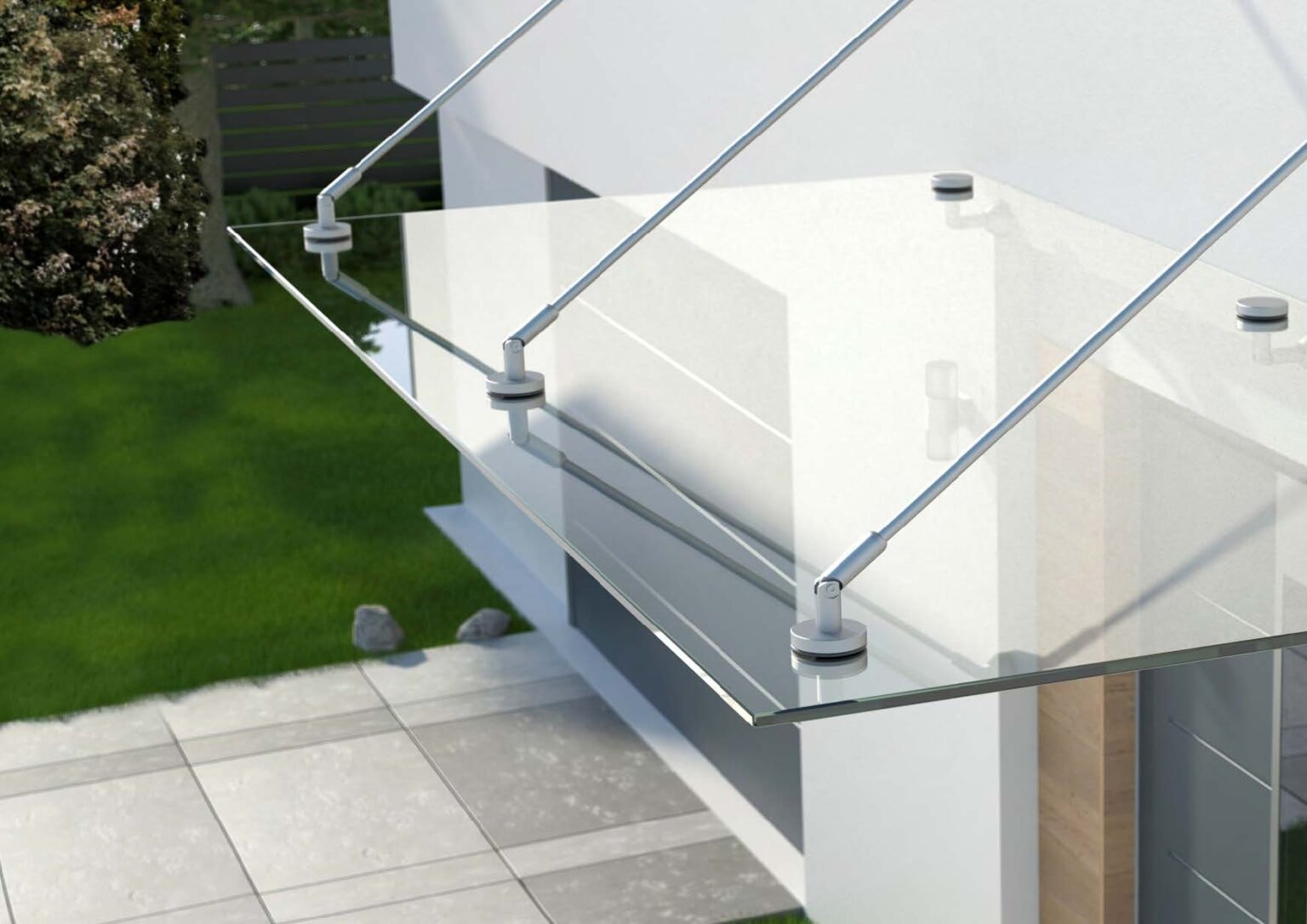Choosing the Right Glass Canopy for Your Home
When it comes to enhancing the exterior of your home, few additions combine style and function as seamlessly as a glass canopy. Whether installed above the front door, patio, or balcony, a glass canopy offers shelter from the elements while adding a touch of modern elegance. But with various styles, materials, and structural options available, choosing the right glass canopy for your home requires thoughtful consideration.
In this blog post, we’ll walk you through the key factors to consider, types of glass canopies, benefits, and some practical tips to help you make an informed decision.
Why Install a Glass Canopy?
Before diving into the details of selection, it’s important to understand the advantages of installing a glass canopy.
Aesthetic Appeal
Glass canopies provide a sleek, contemporary look that can elevate your home’s kerb appeal. They allow natural light to pass through while offering protection, unlike traditional canopies that can feel bulky or obstructive.
Weather Protection
One of the most functional aspects of a glass canopy is its ability to shield you and your doorway from rain, snow, and harsh sunlight, reducing wear and tear on your front entrance or outdoor furniture.
Increased Property Value
Stylish architectural features like a glass canopy can increase the perceived value of your home, making it more attractive to prospective buyers.
Low Maintenance
Most glass used in canopies is treated to resist dirt and debris, requiring minimal cleaning and upkeep.
Types of Glass Canopies
Glass canopies come in a variety of forms, and the right choice depends on both functional needs and personal style preferences.
Cantilevered Canopies
These are mounted directly to the wall without visible support columns. They offer a minimalist look and are ideal for modern homes. However, they require strong wall anchoring and professional installation.
Frameless Glass Canopies
Using specialised hardware, frameless canopies create a floating appearance, maximising visual appeal. These are best for those seeking a high-end, contemporary design.
Framed Glass Canopies
These use visible metal frames, often aluminium or stainless steel, for support. They offer structural strength and are more traditional in appearance.
Suspended or Rod-Supported Canopies

Held by tension rods or cables, these canopies give a sleek, industrial look and provide excellent stability. They are especially popular for entrances or commercial spaces but work well in residential settings too.
Key Considerations When Choosing a Glass Canopy
1. Purpose and Placement
Determine where you want the canopy and what it will be used for. Is it to protect a doorway? Cover a patio? Provide shade for windows? The location will guide size, design, and structural support requirements.
2. Building Regulations and Permits
Always check with local authorities or your homeowner’s association about building regulations. Some locations may have height restrictions, structural requirements, or aesthetic guidelines.
3. Glass Type and Safety
Choose safety glass, such as:
- Tempered Glass – Stronger than standard glass, shatters into small, blunt pieces when broken.
- Laminated Glass – Made by sandwiching a layer of plastic between two panes; holds together when broken and provides UV protection.
Additionally, consider options with self-cleaning coatings or tinted finishes for added convenience and comfort.
4. Size and Scale
Your glass canopy should be proportionate to the space. A canopy that’s too small will fail to provide adequate coverage; one that’s too large can overpower your home’s design.
Take accurate measurements and, if possible, consult with a professional designer or installer.
5. Material of Supporting Structure
Glass canopies often require supporting materials such as:
- Stainless Steel – Durable and rust-resistant, ideal for long-term use.
- Aluminium – Lightweight and corrosion-resistant, good for contemporary styles.
- Wood – Less common but provides a warmer, traditional aesthetic when paired with glass.
6. Budget
Glass canopies range in price depending on size, materials, and customisation. While frameless or custom-designed options may cost more, they offer unique aesthetic benefits. Always factor in installation costs and any required permits when budgeting.
Practical Tips for Installation and Maintenance
1. Hire Professionals
While DIY glass canopy kits are available, professional installation ensures safety, structural integrity, and compliance with building codes.
2. Maintenance Tips
- Use a soft cloth and mild detergent for regular cleaning.
- Inspect fittings and brackets annually.
- Remove leaves or snow build-up promptly to prevent damage.
3. Design Harmony
Ensure your canopy complements your home’s architecture. Match metal finishes to your door hardware, railing, or lighting fixtures for a cohesive look.
Common Mistakes to Avoid
- Overlooking Drainage – Ensure your canopy design includes proper water runoff to prevent pooling or leaks.
- Undersizing – Don’t compromise coverage for aesthetics. A properly sized canopy is both functional and beautiful.
- Ignoring Local Climate – Choose materials and designs suited for wind, snow, or salt exposure depending on your location.
- Skipping Permits – Avoid fines and delays by checking permit requirements ahead of time.
Final Thoughts
A glass canopy is more than just a decorative addition, it’s a functional investment that enhances your home’s usability and appearance. By considering design options, structural needs, safety features, and aesthetic harmony, you can choose a canopy that meets your needs and elevates your home’s exterior.
Whether you’re looking for a bold architectural statement or a subtle enhancement, the right glass canopy will provide beauty, protection, and value for years to come.
Here at UKO Glass, we offer a wide range of glass options including glass canopies for a sleek and modern appearance. To find out more speak to our team on theteam@ukoglass.co.uk today!
